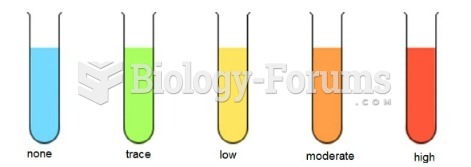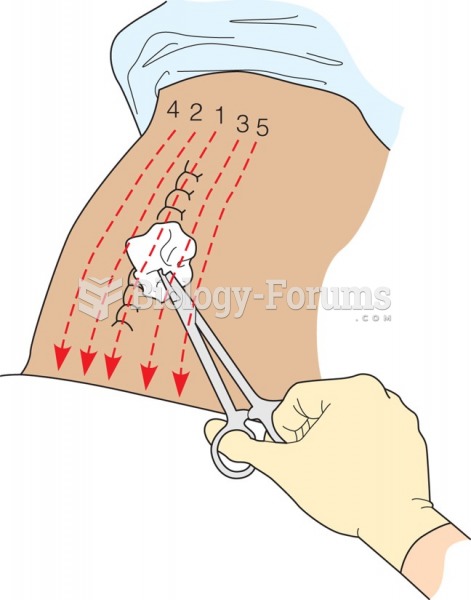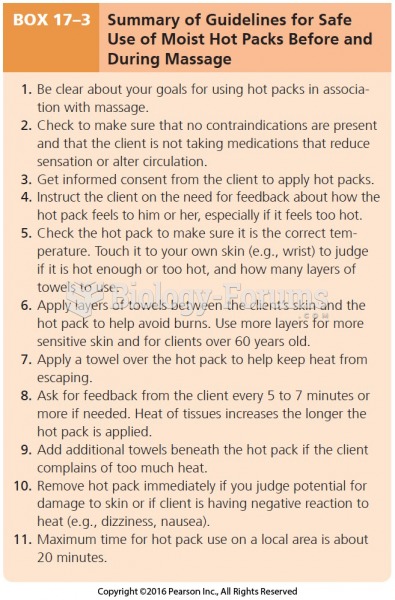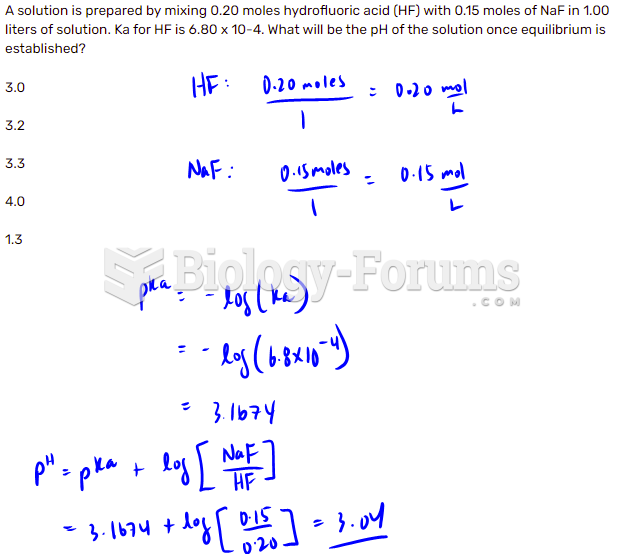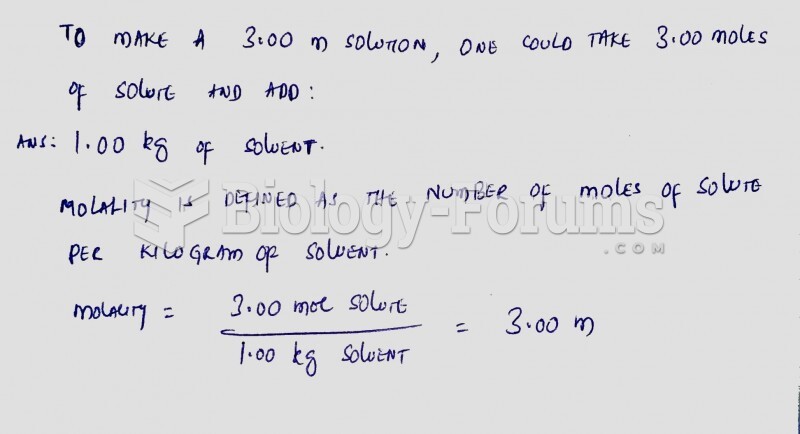Answer to Question 1
B
Moist-to-dry dressings consist of gauze moistened with an appropriate solution. Commonly used wetting agents include normal saline and lactated Ringer's solution, which are isotonic solutions that aid in mechanical debridement. A dressing that is too wet causes tissue maceration and bacterial growth. It also does not dry out and therefore does not remove necrotic tissue when it is being removed from the wound. Acetic acid is effective against Pseudomonas aeruginosa but is toxic to fibroblasts in standard dilutions. Povidone-iodine is a rapid-acting antimicrobial agent for cleansing intact skin and is never used on a healthy granulating wound bed.
Answer to Question 2
B
B. Have client use padding or types of clothing that will cushion bony prominences, especially high-risk bony prominences (e.g., hips). Specially designed hip protectors are available.
A. Provide direct light source in areas where client reads, cooks, uses tools, or conducts hobby work. High-intensity light on object or surface that is involved works best. Older adults require three times as much light to see objects as they did when they were in their twenties.
C. Have client select fire extinguisher that is easy to handle and manipulate. Older adult or client with disability may have difficulty gripping mechanisms on certain extinguishers.
D. Have grab bar installed in studs at tub, toilet, and/or shower. Have client select vertical or horizontal placement if choice available. Be sure bar is different color than that of wall. Towel bars are not designed to support weight of client.


